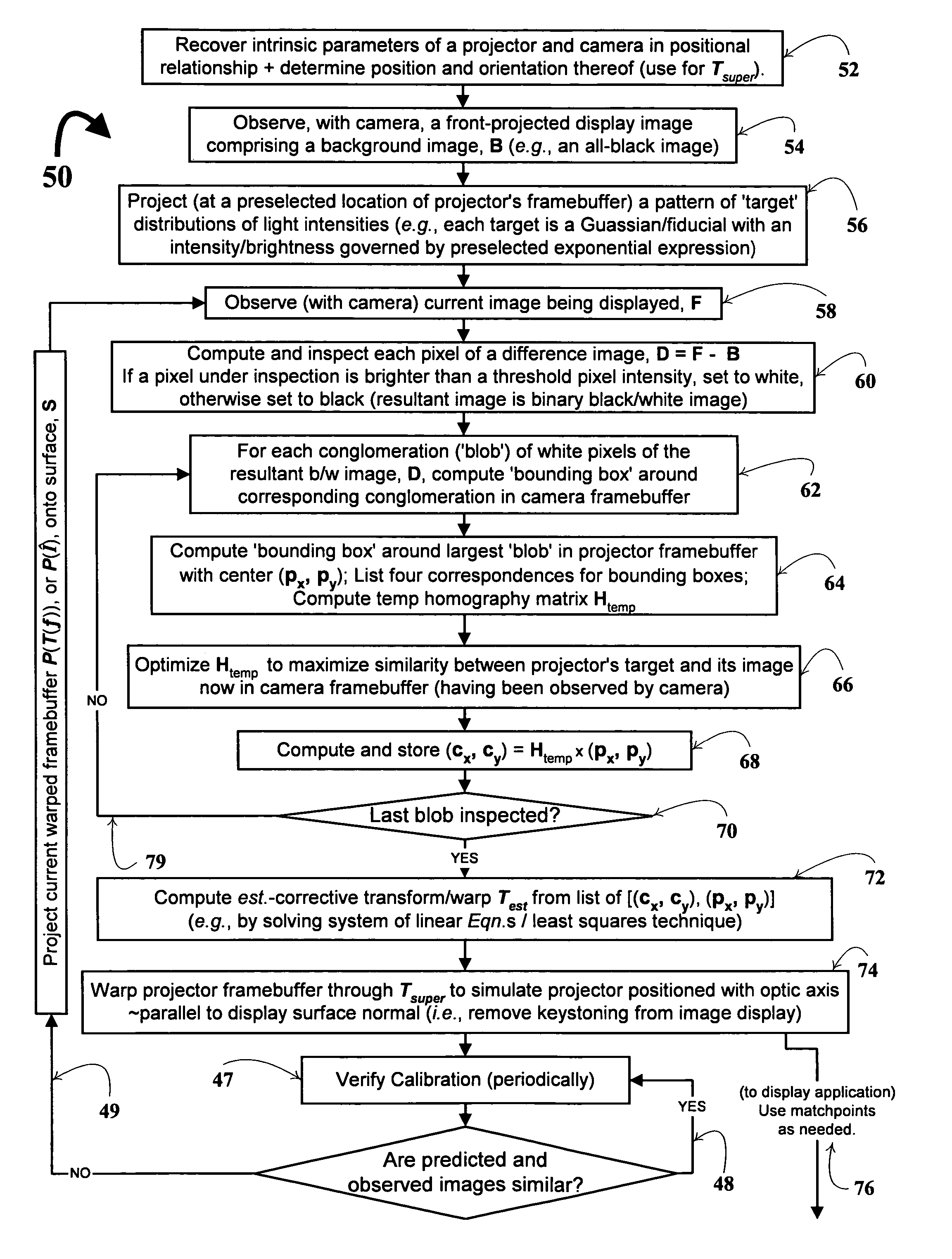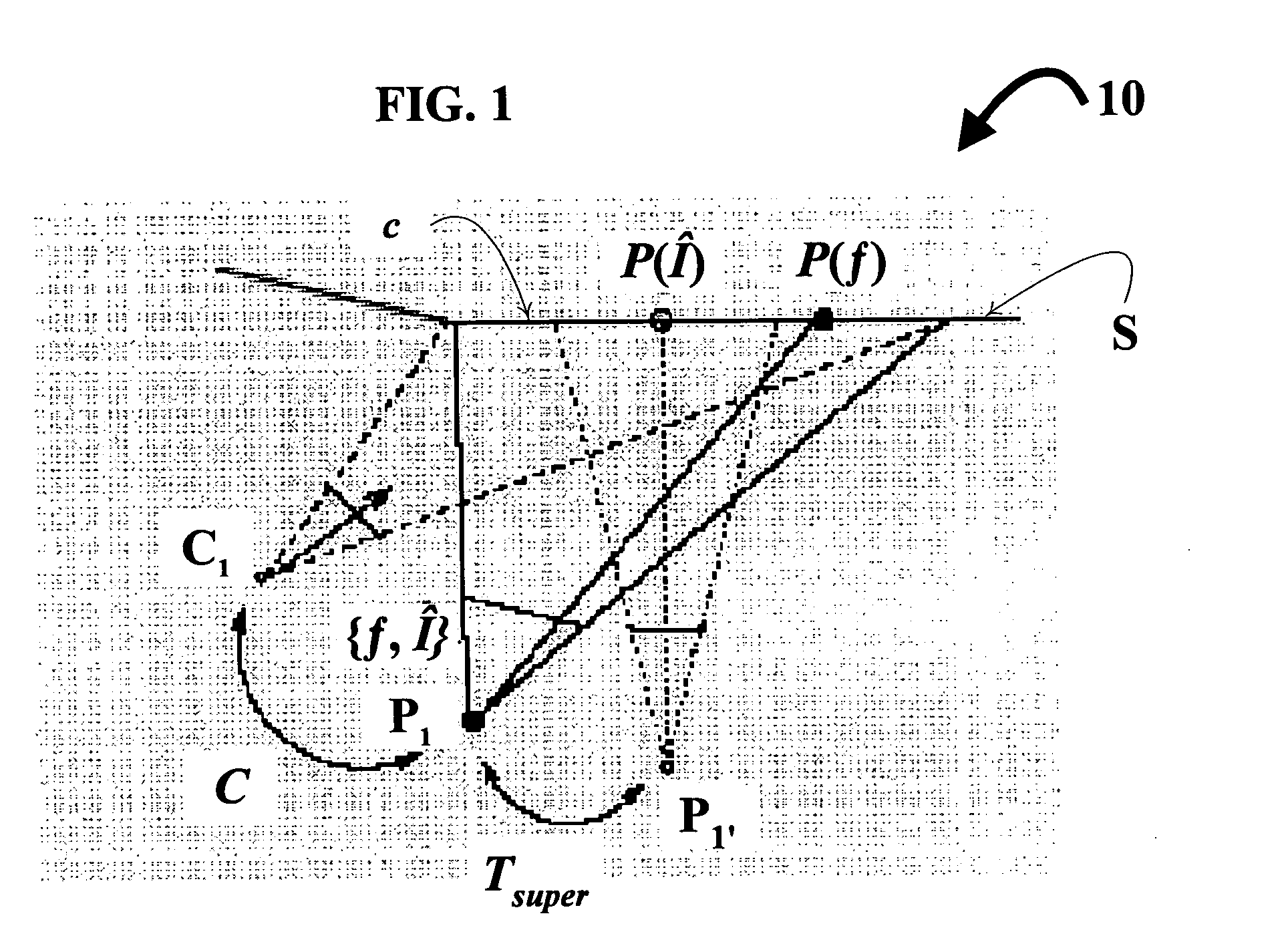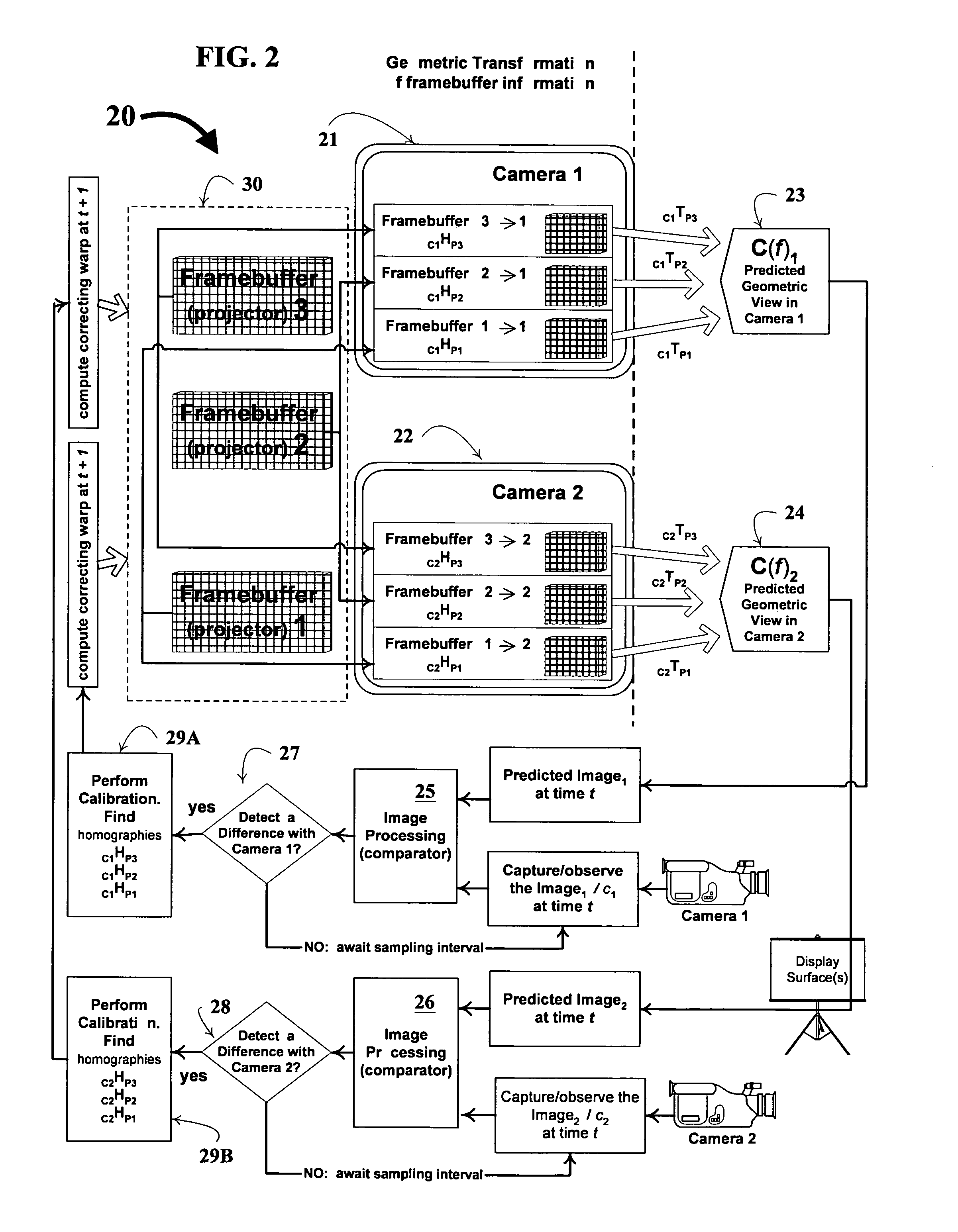Monitoring and correction of geometric distortion in projected displays
a technology of projection display and monitor, which is applied in the direction of projection device, television system, pulse technique, etc., can solve the problems of display miscalibration, interrupting display use, and projector system subject to display
- Summary
- Abstract
- Description
- Claims
- Application Information
AI Technical Summary
Benefits of technology
Problems solved by technology
Method used
Image
Examples
Embodiment Construction
[0017]In connection with discussing the features in FIGS. 1–2, occasional reference will be made back-and-forth to other of the figures, especially, FIGS. 3–4 which detail core, as well as further unique and distinguishing features of technique of the invention 50—and further providing a pictorial demonstration of the flexibility of design of applicant's invention. As one can appreciate, the configuration of the simplified projector-camera pair system 10 in FIG. 1 is suitable for a wide variety of display environments.
[0018]FIG. 1 depicts a projector-camera system 10, having for example, at least one projector at position P1. P1′ designates a simulated position for projector P1 once the projector's framebuffer is warped, so that the projector's optic axis is ˜parallel to the display surface normal, according to the invention. While only one projector is projecting to contribute to the display of surface S, additional projectors may be included; at least one camera C1 is also depicte...
PUM
 Login to View More
Login to View More Abstract
Description
Claims
Application Information
 Login to View More
Login to View More - R&D
- Intellectual Property
- Life Sciences
- Materials
- Tech Scout
- Unparalleled Data Quality
- Higher Quality Content
- 60% Fewer Hallucinations
Browse by: Latest US Patents, China's latest patents, Technical Efficacy Thesaurus, Application Domain, Technology Topic, Popular Technical Reports.
© 2025 PatSnap. All rights reserved.Legal|Privacy policy|Modern Slavery Act Transparency Statement|Sitemap|About US| Contact US: help@patsnap.com



